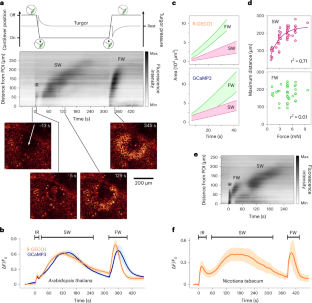2023-05-31 マサチューセッツ大学アマースト校
◆ECMは微生物の保護膜として機能する一方、栄養素や酵素の導管としても機能しています。微生物がECMをどのように操作しているかを理解することは、抗生物質耐性から配管の問題、医療器具の汚染に至るまで、幅広い意味を持ちます。
◆今回の研究では、微生物が分泌するシュウ酸が、ECMの粘性を作り出し、調整する上で重要な役割を担っていることがわかりました。シュウ酸が多く存在するほどECMの粘度が高くなり、微生物が透過性をコントロールできるようになるのです。
◆この発見は、化合物が微生物によって分泌される仕組みに関する従来の理解を覆すものであり、病原体において低分子がより大きな役割を果たす可能性を示唆しています。ECMの透過性を操作することで、抗菌薬の効果を高め、微生物疾患のより良い治療法につながる可能性があります。
<関連情報>
- https://www.umass.edu/news/article/research-led-umass-amherst-first-unlock-secret-microbial-slime
- https://www.cell.com/iscience/fulltext/S2589-0042(23)00928-8
シュウ酸塩とβ-グルカンの相互作用: 真菌の細胞外マトリックスと代謝物輸送への示唆 Interaction of oxalate with β-glucan: Implications for the fungal extracellular matrix, and metabolite transport
Gabriel Perez-Gonzalez,Geoffrey A. Tompsett,Kyle Mastalerz,Michael T. Timko,Barry Goodell
iScience Published:May 09, 2023
DOI:https://doi.org/10.1016/j.isci.2023.106851

Highlights
•β-glucan binds oxalate to form a hydrogel, a previously unreported finding
•Fungal ECM simulations showed that ECM hydrogels greatly limited protein diffusion
•Low-molecular-weight catecholates passed readily through high-oxalate hydrogels
•Microbial ECMs may impact biofilm formation, degradation mechanisms, and drug diffusion
Summary
β-glucan is the major component of the extracellular matrix (ECM) of many fungi, including wood degrading fungi. Many of these species also secrete oxalate into the ECM. Our research demonstrates that β-glucan forms a novel, previously unreported, hydrogel at room temperature with oxalate. Oxalate was found to alter the rheometric properties of the β-glucan hydrogels, and modeling showed that β-glucan hydrogen bonds with oxalate in a non-covalent matrix. Change of oxalate concentration also impacted the diffusion of a high-molecular-weight protein through the gels. This finding has relevance to the diffusion of extracellular enzymes into substrates and helps to explain why some types of wood-decay fungi rely on non-enzymatic degradation schemes for carbon cycling. Further, this research has potential impact on the diffusion of metabolites in association with pathogenic/biomedical fungi.


